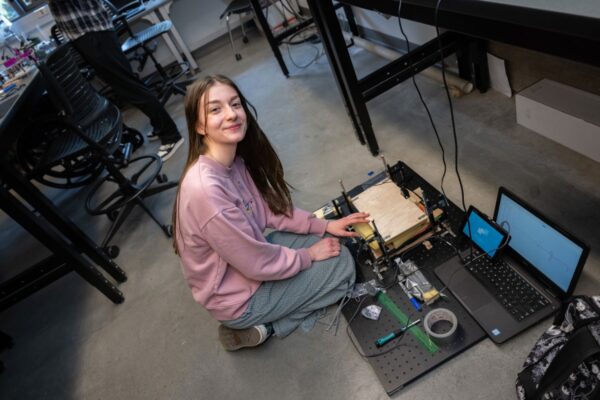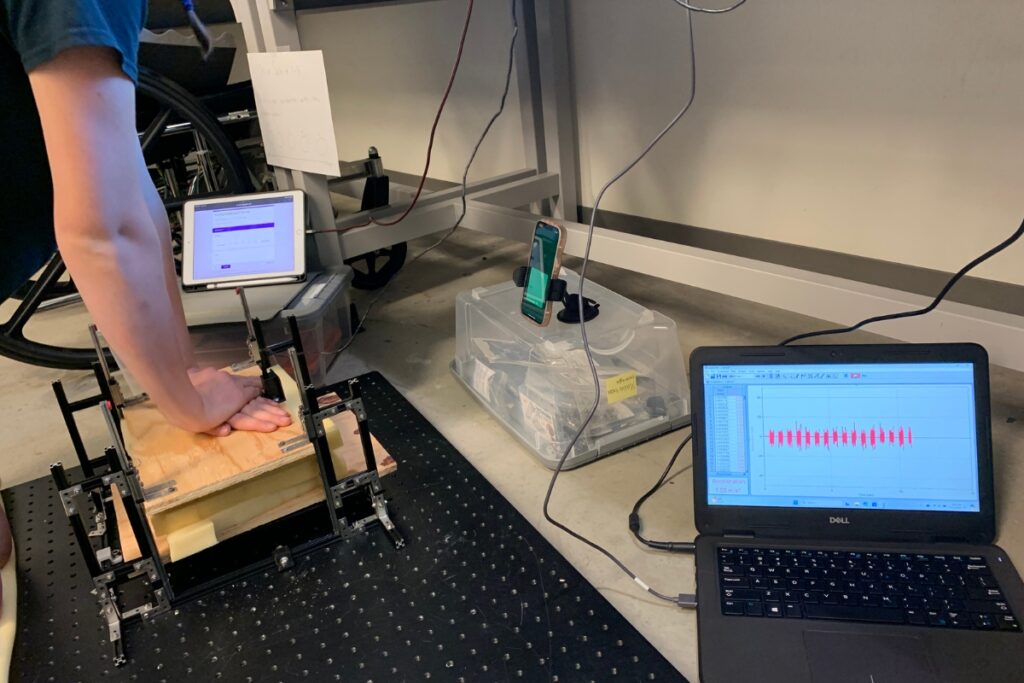Designing to Save Lives by Brooke Ojala

This summer, I worked with Dr. Jong Yoon, in the Smart Medical Devices Lab. Without consistent feedback, cardiopulmonary resuscitation (CPR) may have inconsistencies, so we worked toward creating a robotic ultrasound system that can be used to improve CPR outcomes in a non-hospital, field setting. This system will provide first responders with adaptive audiovisual feedback based on real-time blood flow measurements of a cardiac arrest victim. The goal is for a first responder to receive intuitive feedback from an app interface and be able to complete effective compressions at the required rate and depth.
My portion of the project focused on developing the adaptive user interface by studying the human perception of audiovisual feedback. This has required me to develop a user interface prototype and conduct user interface testing to determine the most dominant factors of design. During the interface testing phase I recruited volunteers who were asked to observe 16 different interfaces and complete compressions on a collection device with intermittent breaks for surveys.
After analysis of performance along with the volunteer’s preferences, I determined the dominant factors of design to be sound, animation and text, whereas color was determined to be less important and caused errors in the data. The outcomes of this experiment will be combined with findings from our human centered design team who reached out to potential users to identify their needs and preferences. Future work will be using these findings to create an optimal design.
Throughout this summer I conducted an experiment with volunteer involvement for the first time and processed the associated data. This had me diving deep into many unfamiliar ideas, programs and processes. I learned the importance of providing clear and consistent instructions, along with validating the experimental setup and algorithms to ensure meaningful and accurate results.

An obstacle I encountered was having a limited amount of tools and resources. The accelerometer I was using was not an optimal tool for collecting rate and depth information and that a lot of data was lost due to drift in the data collection. To combat this challenge I had to extract reliable data while cutting out drifted sections of data which decreased the amount of data I had but increased the reliability of my results.
Undergraduate research has allowed me to build a strong tool box of skills such as troubleshooting, creative thinking, data analysis, and collaboration. I have learned how to stretch my thinking and constantly overcome difficult problems that were once beyond my scope of understanding. I have also learned that collaboration is one of the biggest assets, even in independent research. It has always paid off to get insight into a problem that is outside of my skillset or knowledge base.
My advice to future undergraduate research students is to get comfortable with being confused and seemingly in too deep. It is completely normal to be stuck on the same problem all week and have many failed solutions. Research is a repetitive process which requires the exploration of many diverse solutions, with no one true answer.
I also think it is very important to work with your mentor to create clear goals and expectations so that you have a more structured and guided experience. Something else to keep in mind is that the outcome of the research is not always the most important thing, the skills and experience you gain along the way also holds great value. My mentor has told me that his goal in mentoring students is to help them gain meaningful skills and get hands-on, practical experience, and if there happens to be some meaningful results, it is just a plus.
Learn more about the Research & Creative Projects for Undergrads at UW Bothell.